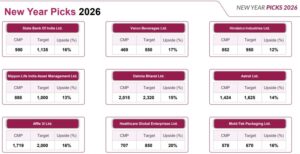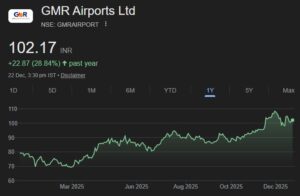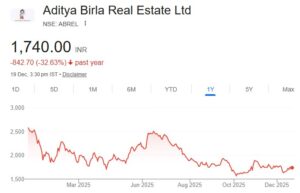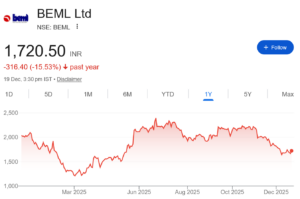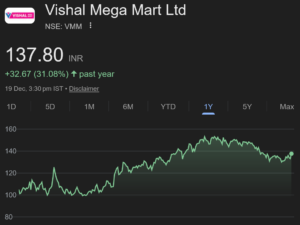Difference between Futures and Options
• An option gives the buyer the right but not the obligation while the seller has an obligation to comply with the contract. In the case of a futures contract, there is an obligation on the part of both the buyer and the seller. When you purchase call or put options you have the right to let your option lapse but if you choose to exercise it, the counter-party (seller) must comply. A futures contract, on the other hand, is binding on both counter-parties as both parties have to settle on or before the expiry date.
• Purchasing a futures contract requires an up front margin and normally involves a larger outflow of cash than in the case of options, which require only the payment of premium.
• A future contract carries unlimited profit and loss potential whereas a buyer of a call or put option’s loss is limited but the profit potential is unlimited.
• Futures are a favourite with speculators and arbitrageurs whereas options are widely used by hedgers.
Criteria Rights and obligations Cash outflow Payoff Used by Futures Futures contracts are binding on both the buyer and the seller Up front margin from both the buyer and the seller. Both buyers and sellers face the possibility of unlimited profit or Joss More popular with speculators Options Buyer has the right but no obligation to comply with the contract. Seller is obligated to comply if the buyer chooses to do so Buyer pays a premium. Seller receives the premium but has to deposit margins Buyers could benefit from the possibility of unlimited profit but their losses are restricted to the premium paid. Sellers could benefit only to the extent of the premium received but they are exposed to the possibility of unlimited losses Widely used by hedgers Break even 1121
Option Trading Strategies
While options contracts offer immense trading possibilities since these products can be used in tandem with stock futures or equity shares for the construction of various derivative strategies. A thorough understanding how options can be used is the basis for further improvisation. Here are some commonly used strategies that deal with options alone.
Strategy Scenario:
High bullishness
Action: Buy an out-of-the-money call option
Assumptions
Underlying Stock: Reliance Industries Ltd.
Current cash market price: Rs 1,060
Contract size: 600 shares
Strike prices available: Rs 1,060, Rs 1,080, Rs 1,100, Rs 1,140.
Premium: Rs41, Rs31, Rs21, Rs 12, respectively, for the above strike prices.
If you are bullish about Reliance and expect the price to go beyond Rs 1,150, you could buy a call with a strike price of Rs 1,100, which is available at a premium of Rs 21. The payoff would start once the share price exceeds Rs 1,121. You stand to lose Rs 12,600 (600 x 21) if the share price remains below Rs 1,100 until the expiry date.
ol—~——,———-:..,-L—-,———-, 1 60 20000 Buying an out-of-the-money call option 40000 -20000 Stock price on settlement (Rs) •. . . • 1060 -12600 1100 -12600 1121 0 1130 5400 1140 11400 1150 17400 1160 23400 Stock price on settlement (Rs)
If you do not envisage any major movement, i.e., a listless market, then you may use this opportunity to sell a call option at the current rate. You need to short a call option at a strike price of Rs 1,060 for which you will receive a premium of Rs 41. This will yield you a short gain of Rs 24,600, if the market remains static at the current levels. The payoff is immediate and you will be affected only beyond the price level of Rs 1,101 (1060+41). You do not stand to lose till such time the price of Reliance exceeds Rs 1,101. Beyond that, every rise of Re 1 in the price of Reliance will cost you Rs 600 (since the lot size is 600 shares).
Strategy Scenario:
Sluggishness or a possible fall in price
Action: Sell an at-the-money naked call
Assumptions
Underlying Stock: Reliance Industries Ltd.
Current cash market price: Rs 1060
Contract size: 600 shares
Strike prices available: Rs 1,060, Rs 1,050, Rs 1,040
Premium: Rs 41, Rs 48, Rs 53, respectively, for the above strike prices.
1 0 Selling an at-the-money call option -20000 40000~-=2-:"46:":O";;’O_–…… 20000 ‘iii’ S ~ ~ Of—–,——–,——=l~– e, 1040 24,600 1050 24,600 1060 24,600 1070 18,600 1080 12,600 1090 6,600 1100 600 1101 0 1110 -5,400 1120 -11,400 …. .. .. . . .
Strategy Scenario: Possible sharp fall in the price of a stock or index
Action: Buy a put option at a high out of- the-money level
Assumptions
Underlying Stock: Reliance Industries Ltd.
Current cash market price: Rs 1,060
Contract size: 600 shares Strike prices available: Rs 1,040, Rs 1,020, Rs 1,000 Premium: Rs 33, Rs 26, Rs 22, respectively, for the above strike prices.
If you have a bearish view, you could buy a put option with a strike price of Rs 1,000 for a premium of Rs 22. This will involve a payment of Rs 13,200. If the price of Reliance falls below Rs 1,000, the above strategy would yield a gain of Rs 600 per fall of Re 1 in the price and you stand to lose a sum of Rs 13,200, if the share price of Reliance does not fall below Rs 1,000.
…. .. .. . . . 960 10800 970 4800 978 0 980 -1200 990 -7200 1000 -13200 1010 -13200 1020 -13200 15000 9 -15000 Buying a put option at a high out-of-the-money level Break even 978 1010 1020 -13200 Stock price on settlement (Rs) .1 21600 Break even 1014 990 -14400 1000 -8400 1010 -2400 1020 3600 1030 9600 1040 15600 1050 21600 1060 21600
Selling an at-the-money call option (naked put)
-20000 Stock price on settlement (Rs) 40000l g:200001 ~ >. III Cl. …. .. .. . . .
Strategy Scenario: Sluggishness or a possible rise
Action: Sell an at-the-money put option (naked put)
Assumptions
Underlying Stock: Reliance Industries Ltd.
Current cash market price: Rs. 1,060
Contract size: 600 shares
Strike prices available: Rs 1,020, Rs 1,040, Rs 1,050.
Premium: Rs 26, Rs 33, Rs 36, respectively, for above strike prices.
If you do not expect any major movement in the price or at the most, a possible rise, then you could use this opportunity to sell a put option at the current rate. You may short a put option for a strike price of Rs 1,050 and receive a premium of Rs 36 per share. This will yield a short gain of Rs 21,600 if the market remains static at the current levels or rises subsequently. The payoff is immediate and you would be affected only beyond the price level of Rs 1,014 (Rs 1,050 – Rs 36). You do not stand to lose till such time the price of Reliance stays above Rs 1,014. However, beyond that you lose at Rs 600 per fall of Re1 in the price of Reliance.
Spreads
A spread strategy involves taking a position in two or more options of the same type, i.e., either calls or puts. These spreads could be constructed by taking positions in options on the same underlying stock or index, with the same expiry date but with different strike prices, these are called ‘Vertical spreads’. Similarly, there are ‘Horizontal spreads’, wherein the underlying stock and strike prices of the options used are the same but the expiry date is different. There are also ‘Diagonal spreads’ that are constructed using options on a single underlying stock or index but with different strike prices and different expiry dates too. And spreads can get still more complicated. To illustrate how spreads work, we have used different Vertical spreads only, i.e., in each of the strategies described below, the expiry date of the options used are the same. These will give you a fair idea of how spreads work and with practice and experience you could U5e your ingenuity to construct spreads of other types, too.
———— —– Stock price on settlement (Rs)
:s: o >. III Q. -15000J-12000 1070 1080 1090 1100 1110 1120
Strategy Scenario: Moderate bullishness
Action: Bull Spread using call options
A bull spread is created by buying a call option and simultaneously selling a call option while ensuring that the strike price of the purchased call is lower than the strike price of the call that you sell. A bull spread can also be constructed by buying a put option and selling another. Here again, the strike price of the purchased put must be lower than the strike price of the put that you sell.
Assumptions
Underlying Stock: Reliance Industries Ltd.
Current cash market price: Rs 1,060
Contract size: 600 shares
Strike prices available: Rs 1,060, Rs 1,080, Rs 1,100.
Premium: Rs 41, Rs 31 t Rs 21, respectively, for the above strike prices .
• 111111 Bull Spread using call options 1040 24600 12600 -12000 15000l 12000 1050 24600 12600 -12000 I Break even 1080 1060 24600 12600 -12000 Vi S 18600 12600 -6000 12600 12600 0 6600 12600 6000 600 12600 12000 o 6600 12000 -5400 600 12000 — Break even 1080 -12000 Stock price on settlement (Rs) 12000
If you are moderately bullish on Reliance and foresee the price of Reliance going beyond Rs 1,100, you could buy a call with a strike price of Rs 1,060, which is available at a premium of Rs 41, and simultaneously sell a call option with a strike price of Rs 1,100, which would fetch you Rs 21 per share. The net cost of the spread would be Rs 41 less Rs 21, i.e., Rs 12,000 (for a lot size of 600 shares). If the price of Reliance stays below Rs 1,060, you will stand to lose Rs 12,000 and neither of the calls will be executed. The break even point for this spread position is at Rs 1080, which is the lower strike price plus the net premium payable, i.e. Rs 1,060 + Rs 20. But what if the price remains above Rs 1,060 but below Rs 1,080 or what if the price exceeds Rs 1,080. The different payoffs for each scenario are illustrated below. However, here you have capped your selling price at Rs 1,100 and would not be able to take advantage of any gain that could accrue, if the share price exceeds Rs 1,100.
Image
Strategy Scenario: Moderate bearishness
Action: Bear Spread using call options
In contrast to a bull spread, a bear spread is used when one is bearish about the market. A bear spread can be created by selling a call option of a lower strike price and simultaneously buying a call option of a higher strike price. Alternatively, you could create a bear spread by selling a put option of a lower strike price and simultaneously buying a put option of a higher strike price. Irrespective of whether you use calls or puts, the option that you purchase in a bear spread should have a higher strike price than the one that you sell. The bear spread strategy explained here uses call options.
For any market price below Rs 1,060 both the options would expire worthless and the total profit on the position would be the net premium received at Rs 20 per share. Here, the break-even price would be at a market price that equals the lower strike price plus the net premium received, i.e., Rs 1,080 (Rs 1,060 + Rs 20). At the higher strike price, both options would get exercised but your loss will be limited to Rs 12,000 since the profit from the long call offsets the losses from the short call to an extent. Assumptions Underlying Stock: Reliance Industries Ltd. Current cash market price: Rs 1,060 Contract size: 600 shares Strike prices available: Rs 1,060, Rs 1,080, Rs 1,100. Premium: Rs 41, Rs 31, Rs 21, respectively, for the above strike prices.
If you are moderately bearish on Reliance and expect the price of Reliance to fall, you could sell a call option with a strike price of Rs 1,060 and receive a premium of Rs 41 per share and simultaneously buy a call option with a strike price of Rs 1,100 at the rate of Rs 21 per share.
The net inflow would be Rs 12,000 (Rs 41 less Rs 21 multiplied by 600).
15000 -15000 1040 24600 -12600 12000 1050 24600 -12600 12000 1060 24600 -12600 12000 1070 18600 -12600 6000 1080 12600 -12600 0 1090 6600 -12600 -6000 1100 600 -12600 -12000 1110 -5400 -6600 -12000 1120 -11400 -600 -12000
The payoff from the bear spread is given in the following table. ._. II’II• .’ ..•. …. :. ‘.. ….._—————~ I 1200 Break even 1143 12000 Long Strangle Stock price on settlement (Rs)
Strategy Scenario: Uncertainty in price movements and expected movement in either direction will be large.
Action: Long Strangle.
Simultaneously buying a call option and a put option and ensuring that the strike price of the call option is higher than the strike price of the put option.
This strategy is generally used when company results are due or election results are expected.
Assumptions
Underlying Stock:
Reliance Industries Ltd.
Current cashmarket price: Rs 1060
Contract size: 600 shares
Strike prices available for call option: Rs 1,060, Rs 1,080, Rs 1,100.
Strike prices available for put option: Rs 1,020, Rs 1,000. Premium: Rs 41, Rs 31, Rs 21, respectively, for above call options
.111111 920 -12600 34800 22200 940 -12600 22800 10200 960 -12600 10800 -1800 980 -12600 -25200 -37800 1000 -12600 •13200 -25800 1020 -12600 -13200 -25800 1080 -12600 -13200 -25800 1100 -12600 -13200 -25800 1120 -600 -13200 -13800 1140 11400 -13200 -1800 1160 23400 •13200 -10200 1180 35400 -13200 -22200 Break even 1134 Long Straddle Break even 966 -50400 Stock price on settlement (Rs)
Premium: Rs 26, Rs 22, respectively, for above put options If you are expecting large movements in the price of a particular stock or index which may be triggered by an announcement of the outcome of an event, you could use a long strangle strategy, which involves simultaneously buying a call option and a put option wherein the strike price of the call option is higher than that of the put. You stand to benefit if the price movements are outside the boundary of the call and put option and the difference is more than the cost of buying the call and the put option. In our example, you buy a call option with a strike price of Rs 1,100 for a premium of Rs 21 per share and buy a put option with a strike price of Rs 1,000 for a premium of Rs 22 per share The total outflow asa result of premium payments will be Rs 21 plus Rs 22, i.e., Rs 43 per share. You will benefit if the share price shoots up above Rs 1143 (i.e., the higher . strike price + the premium paid) or dips to below Rs 957 (i.e., the lower strike price + the total premium paid). The payoff from a strangle is given in the table hereunder.
Table
Strategy Scenario: Uncertainty in price movements but movement in either direction will be large
Action: Long Straddle.
Simultaneously purchasing a call option and a put option, with the same strike price.
This strategy is also used when company results are due or election results are expected. However, a straddle differs from a strangle in that the strike price of both the call and the put are the same, whereas in the case of a strangle, the strike price of the call option is higher than the strike price of the put option.
Assumptions
Underlying stock: Reliance Industries Ltd.
Current cash market price: Rs 1,060
Contract size: 600 shares
Strike price available for call option: Rs 1,050 Strike price available for put option: Rs 1,050
Premium: Rs 48 for the above call option
Premium: Rs 36 for the above put option
If you are expecting a large movement in the price of a stock or an index due to some forthcoming announcement, you could use the long straddle strategy to make the most of these movements. This strategy involves buying a call and a put option with the same strike price and the same expiry date. In the case of our example, you will buy a call option with a strike price of Rs 1,050 per share and pay a premium of Rs 48 per share. You must also buy a put option with a strike price of Rs 1,050 for a premium of Rs 36 per share. Your total outflow on account of premium in this casewould be Rs 48 plus Rs 36, i.e., Rs 84 per share. You will benefit from this strategy if the share price climbs to above Rs 1134 (i.e., the strike price + the premium paid) or falls below Rs 966 (i.e., the strike price + the total premium paid). The payoff from this straddle isgiven in the table hereunder.
30000 -30000 .111111 950 -28800 38400 9600 966 -28800 28800 0 970 -28800 26400 -2400 990 -28800 14400 -14400 1010 -28800 2400 -26400 1030 -28800 -9600 -38400 1050 -28800 -21600 -50400 1070 -16800 -21600 -38400 1090 -4800 -21600 -26400 1110 7200 -21600 -14400 1130 19200 -21600 -2400 1134 21600 -21600 0 1150 31200 -21600 9600
Strategy Scenario: Large price changes are unlikely.
Action:
Butterfly Spreads
Assumptions
Underlying Stock: Reliance Industries Ltd.
Current cash market price: Rs 1,060
Contract size: 600 shares
Strike prices available for call option:
Rs 1,040, Rs 1,050, Rs 1,060
Premium: Rs 53, Rs 45, Rs 41, respectively, for
the above call options
Bull and bear spreads involve taking positions in two options. Butterfly spreads involve taking positions in options with three different strike prices. It involves buying a call at the lower strike price, a call at the highest strike price and selling two options at a strike that is between the strike pr ices of the two calls that you have bought (strike price between the lower strike and the higher strike price). In the example, you would buy two calls, one with a strike price of Rs 1,040 and the other with a strike price of Rs 1,060 and, simultaneously, you would sell two call options, both at a strike price of Rs 1,050. Taking into account the premiums that you have to pay and those that you receive for these four options, your net premium payable would be Rs4 (i.e., Rs 45 + Rs 45 – Rs 53 – Rs 41) .The median strike price is generally close to the spot price of the underlying shares as possible. If the stock price remain s close to the median price (in this case Rs 1,050), it would result in profits. If it extends either above Rs 1056 (i.e., the highest strike price – net premiums, in this case Rs 1,060 – Rs 4) or below Rs 1044 (i.e., the lowest Strike price + net premiums, in this case Rs 1,040 + Rs 4), you would make a loss. The payoff from a butterfly spread is given in the table hereunder.
Table
Strategy Scenario: Large price changes may take place with more likelihood of decrease in stock price than increase.
Action: Strips
Assumptions
Underlying Stock: Reliance Industries Ltd.
Current cash market price: Rs 1,060
Contract size: 600 shares
Strike prices available for call option: Rs 1,050
Strike price available for put option: Rs 1,050
Premium: Rs 48 for the call and Rs 36 for the Put
In a strip, you are expecting the put option to be more profitable than the call option. This strategy involves buying one call opt ion and buying two put opt ions with the same strike price. The payoff from a strips spread is more profitable if there is a big difference between the strike price and spot price on the expiry date due to a fall in the spot price.
Strategy Scenario: Large price changes may take place with more likelihood of increase in stock price than decrease.
Action: Straps
Assumptions
Underlying Stock: Reliance Industries Ltd.
Current cash market price: Rs 1,060
Contract size: 600 shares
Strike prices available for call option: Rs 1,050
Strike price available for put option: Rs 1,050 Premium: Rs 48 for the call and Rs 36 for the put In a strap, you are expecting the call option to be more profitable than the put option. This strategy involves buying one put option and buying two call opt ions w ith the same strike price. The payoff from a strap spread is more profitable if there is a big difference between the strike pr ice and the spot price on the expiry
Tax aspects on derivatives
There are two types of taxes that are applicable to derivative transactions in the Indian capital markets.
Securities Transaction Tax (SIT) is levied on all trades that result in a sale in the derivatives segment of a recognized stock exchange.
Effective June 01, 2006, such transactions (both futures and options) attract SIT at the rate of 0.017% of the value of the transaction.
Additionally Service Tax is applicable@ 12.24% brokerage.
Since 2006-07, income from derivative transactions is treated as business income.
Reproduced with permission from the research work done by Kotak Securities.

